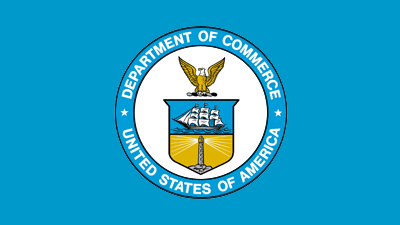
Biden-Harris Administration Advances Early Wildfire Detection by Expanding Use of Satellites as Part of Investing in America Agenda
Jul 23, 2024
Biden-Harris Administration Advances Early Wildfire Detection by Expanding Use of Satellites as Part of Investing in America Agenda
KCPullen@doc.gov
Tue, 07/23/2024 – 13:07
Environmental data
Weather and satellites
FOR IMMEDIATE RELEASE
Tuesday, July 23, 2024
Office of Public Affairs
publicaffairs@doc.gov
A collaborative agreement for use of NOAA satellites will help the Interior and Agriculture Departments detect wildfires early, track wildfires in real time, and provide data for public safety and air quality modeling
The Biden-Harris Administration today announced it is taking additional steps to safeguard western communities in the face of increasingly dangerous and intense wildland fires by building advanced wildfire detection capabilities using satellite technology. The Department of Commerce’s National Oceanic and Atmospheric Administration (NOAA) has signed an agreement with the Department of the Interior and U.S. Department of Agriculture (USDA)’s Forest Service to use the NOAA Geostationary Operational Environmental Satellite — R series (GOES-R) data to rapidly detect and report wildfire starts. Supported by a $20 million investment from the President’s Bipartisan Infrastructure Law—$10 million each from Interior and Agriculture— this new agreement will use advanced remote sensing capabilities to improve the speed and accuracy of wildfire detection.
President Biden’s Investing in America agenda, through the Bipartisan Infrastructure Law, is bringing much-needed assistance to communities across the country — deploying innovative tools to tackle wildfires, increasing the resilience of lands facing the threat of wildland fires, and better supporting federal wildland firefighters. The law includes $5 billion for these Departments over five years to invest in preparedness, fuels management, post-fire restoration, and fire science.
“Now more than ever, the impacts of climate change are increasing the threat of wildfires across the country and thanks to President Biden’s commitment to investing in America, NOAA has been able to significantly improve fire weather forecasts to keep communities safe,” said Secretary of Commerce Gina Raimondo. “This new partnership, a result of the most ambitious climate agenda in history, will help expand our ability to detect wildfires, improve response times, and keep families in western communities out of harm’s way.”
“This collaborative effort demonstrates how the federal government is deploying resources from President Biden’s historic Investing in America agenda to improve its emergency response capabilities and address increasingly frequent and extreme climate-driven wildfires,” said Secretary of the Interior Deb Haaland. “By using expanded satellite capacity to pinpoint wildfire ignitions and provide real-time data for wildfire managers, this partnership with NOAA will enable the Interior and Agriculture Departments to respond to wildfires more rapidly and make informed decisions for firefighting operations and public safety.”
“This partnership is one of the many ways we are investing in technology to improve firefighter and community safety,” said Secretary of Agriculture Tom Vilsack. “Wildland firefighting will always require highly skilled individuals working on the ground, but with more real-time information we can reduce the risks to crews and pilots, and improve our response time reducing the risk to impacted communities.”
Use of NOAA’s GOES-R satellite data will enable the Interior and Agriculture Departments to detect wildfires early, provide firefighters a more detailed look at wildfire conditions, allow faster hot spot detection, and provide the ability to track wildfire progression in real time. GOES-R series satellites are frequently capable of detecting wildfires before they are spotted on the ground or reported to 911. The satellites can also be used to pinpoint the exact location of a fire after smoke reports occur. These improved capabilities will support interagency efforts to protect people and communities from increasingly devastating wildfires.
GOES-R satellite observations are not only valuable for detecting wildfires but are also critical for observing and monitoring smoke from those fires. The ability to monitor smoke plumes in near real time is particularly useful in directing firefighting efforts from the air. Deploying airplanes and helicopters for wildfire suppression efforts is often hampered by poor visibility. GOES-R satellites can help guide decisions for deploying flights by providing information on the exact location and drift of smoke from a fire. The smoke detection and monitoring information also enable better air quality forecasts to help safeguard public health. These improvements help equip communities with the information they need to assess risks and develop climate solutions—a key objective of the National Climate Resilience Framework.
Today’s effort supports recommendations by the Wildland Fire Mitigation and Management Commission, which was established through the Bipartisan Infrastructure Law and charged with making recommendations to improve federal policies related to the mitigation, suppression, and management of wildland fires in the United States. In September 2023, the Commission released a comprehensive report to Congress outlining 148 recommendations to improve the nation’s relationship with wildfire. This collaboration advances recommendations for expanded use of wildfire detection systems and improved collaboration across organizations and jurisdictions.
Bureaus and Offices
National Oceanic and Atmospheric Administration
Leadership
Gina M. Raimondo
Tags
Secretary Gina Raimondo
climate resilience
GOES-R
Public Safety
Read the full report from the U.S. Department of Commerce: Read More



